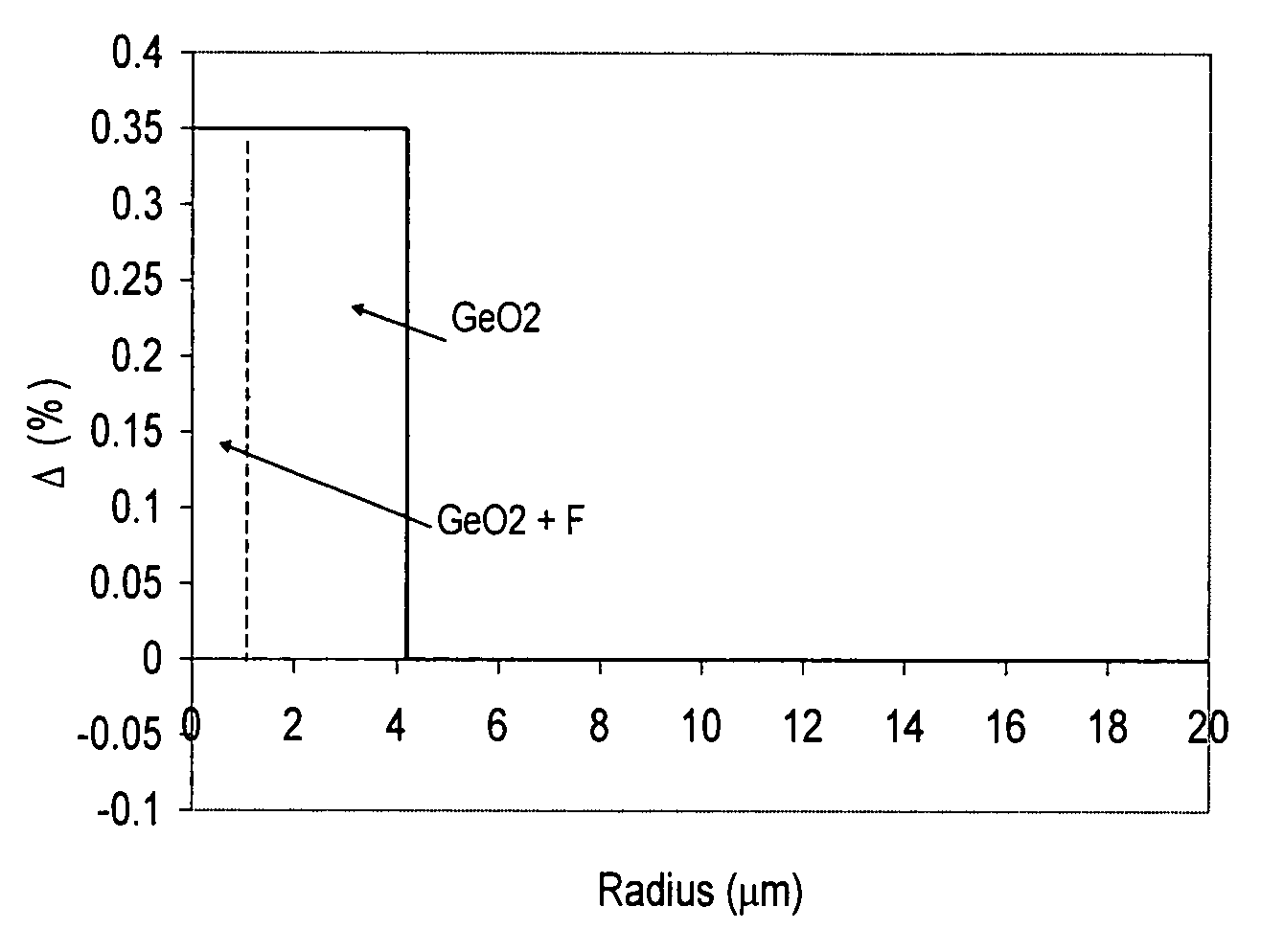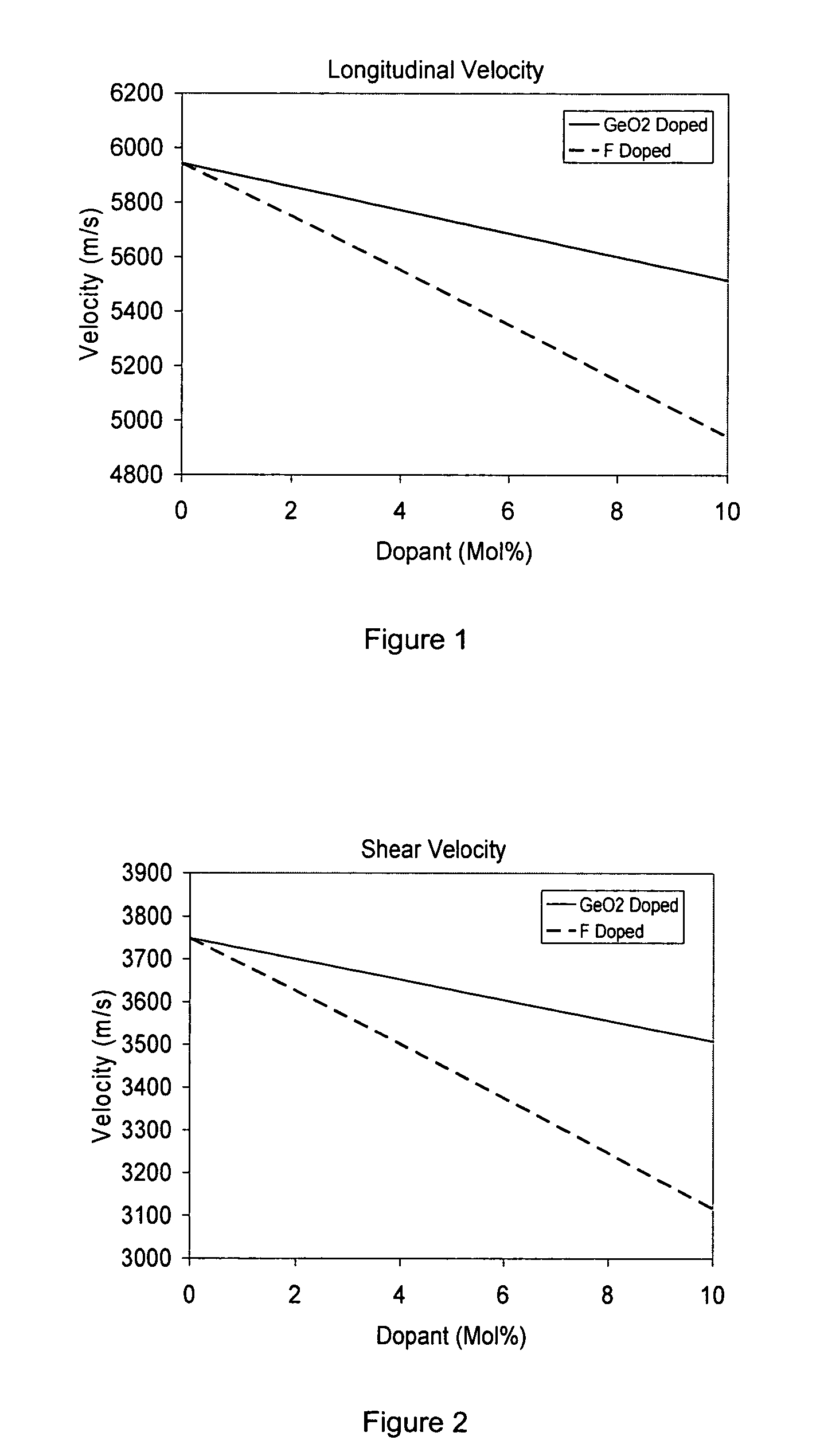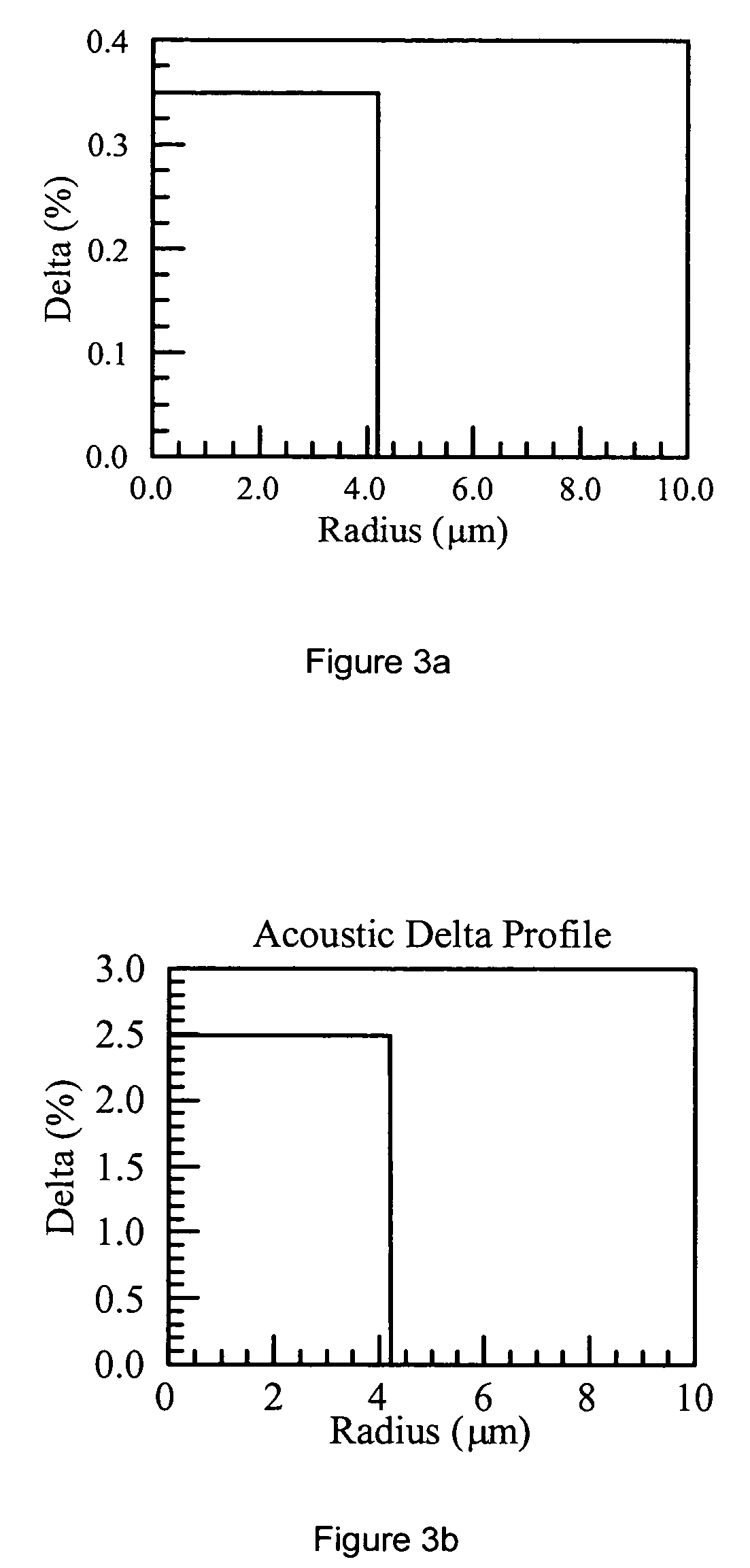High SBS threshold optical fiber with fluorine dopant
a fluorine dopant, high sbs threshold technology, applied in the direction of optical fibers with multi-layer cores/claddings, optical waveguide light guides, instruments, etc., can solve the problems of large loss of signal power, nonlinear penalty, and stimulated brillouin scattering (sbs) to achieve the effect of suitable performan
- Summary
- Abstract
- Description
- Claims
- Application Information
AI Technical Summary
Benefits of technology
Problems solved by technology
Method used
Image
Examples
example 1
Confining the Longitudinal Acoustic Field
[0105]We will compare the performance of the exemplary fibers 10 with that of a standard single mode transmission fiber (fiber 1), i.e., the fiber that does not contain F and which illustrated in FIGS. 3a to 3c. We doped the core region corresponding to the radius r=0 to 2 μm (with varying level of the Fluorine while maintaining the overall optical delta profile to be the same as the fiber of FIG. 3a, so that the optical properties of the fiber, including MFD, effective area, and dispersion were essentially unchanged. The modeling results are summarized in Table 1. We found that as we increase the level of Fluorine doping in the core region 12a, the SBS threshold relative to that in fiber 1 (corresponding to FIGS. 3a and 3b) increases monotonically, which is also shown in FIG. 5.
[0106]
TABLE 10–2 μm2–4.2 μmCaseGeO2F DeltaGeO2F DeltaL01 FOMPowerOverlapNo.Delta (%)(%)Delta (%)(%)(μm2)Power (P0)Improvement (dB)Integral10.3500.35082.211.000.000.97...
example 2
Pushing the Acoustic Field away from the Center
[0108]In this example, we explore another mechanism to reduce the SBS effect. Again, we use the Ge doped step index fiber in FIG. 3a as a reference fiber. But in these embodiments we co-doped the core region 12b (r=2.5 to 4.2 microns) with fluorine dopant while leaving the core region 12a (the core region with the radius of up to 2.5 microns) unchanged. We found that as we increase the doping level of Fluorine in the region 12b as shown in Table 2, the SBS threshold increases monotonically as in FIG. 8.
[0109]
TABLE 20–2.5 μm2.5–4.2 μmCaseGeO2F DeltaGeO2F DeltaL01 FOMPowerOverlapNo.Delta (%)(%)Delta (%)(%)(μm2)Power (P0)Improvement (dB)Integral10.3500.35082.2110.000.9780.3500.38−0.0393.871.140.580.8590.3500.4−0.05113.661.381.410.70100.3500.45−0.1152.441.852.680.53110.3500.47−0.12163.001.982.970.49120.3500.49−0.14171.292.083.190.47130.3500.51−0.16178.502.173.370.45140.3500.53−0.18184.842.253.520.43150.3500.57−0.22196.002.383.770.41160.3500...
example 3
NZDSF Type of Fibers
[0114]The optical delta profile and acoustic delta profile of a typical large area NZDSF fiber is shown in FIGS. 11 and 12 respectively. This fiber has a dispersion of 4.1 ps / nm / km at 1550 nm, Kappa of 48 nm at 1550 nm, dispersion of −15.73 ps / nm / km at 1310 nm, zero dispersion around 1500 nm, MFD of 9.82 μm at 1550 nm, MFD of 7.61 μm at 1310 nm, effective area of 72.52 μm2 at 1550 nm. This fiber has an acoustic FOM of 114.35 μm2. The optical field and longitudinal acoustic fields of this fiber are shown in FIG. 13.
[0115]Now, we consider a case where we have fluorine doped at first region 12a of the fiber core (corresponding to the radius r from 0 to 1 micron) to produce delta of −0.28% and then added Ge to this region, so that the overall optical delta profile is maintained the same as that shown FIG. 11. In this case, the optical properties of the fiber such as the dispersion, MFD and optical effective area are essentially the same as the case when the delta is ...
PUM
 Login to View More
Login to View More Abstract
Description
Claims
Application Information
 Login to View More
Login to View More - R&D
- Intellectual Property
- Life Sciences
- Materials
- Tech Scout
- Unparalleled Data Quality
- Higher Quality Content
- 60% Fewer Hallucinations
Browse by: Latest US Patents, China's latest patents, Technical Efficacy Thesaurus, Application Domain, Technology Topic, Popular Technical Reports.
© 2025 PatSnap. All rights reserved.Legal|Privacy policy|Modern Slavery Act Transparency Statement|Sitemap|About US| Contact US: help@patsnap.com



